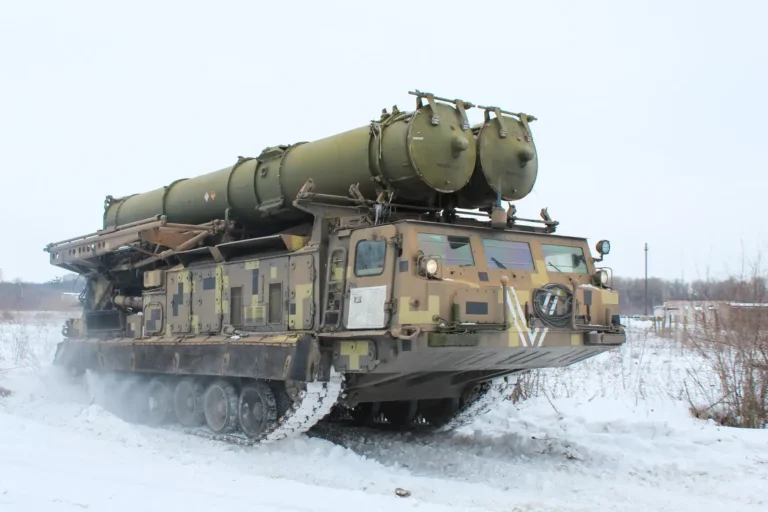Follow Us:

Share
The United States is ramping up its military presence in the Red Sea by deploying a second aircraft carrier group. This decisive move is aimed at countering the growing threat posed by Yemen’s Houthi rebels, whose attacks on international shipping routes have intensified in recent months.
The USS Carl Vinson (CVN-70), now designated as the 2nd aircraft carrier in this operation, has been redirected from the Indo-Pacific to reinforce the USS Harry S. Truman (CVN-75). Together, these aircraft carriers form a powerful naval force aimed at securing vital maritime routes, deterring further aggression, and ensuring stability in one of the world’s most critical waterways.

The USS Carl Vinson, a Nimitz-class aircraft carrier, has been redirected from its Indo-Pacific mission to lead Carrier Strike Group One (CSG-1), which consists of the guided-missile cruiser USS Princeton and two Arleigh Burke-class destroyers, USS Sterett and USS William P. Lawrence. These warships will operate alongside the USS Harry S. Truman, which has already been conducting operations in the Northern Red Sea and will now remain in the area for an extended period.
The presence of two carrier strike groups signals a major shift in U.S. military strategy in the Middle East. It marks the second time in six months that the U.S. has stationed dual carrier groups in the region. Pentagon officials have emphasized that this bolstered naval force is necessary to protect one of the world’s most crucial maritime trade corridors. But why now?
Recently, the Red Sea has become an increasingly volatile region. Reportedly, the Houthis continue to launch drone and missile attacks against foreign vessels perceived to have links to the U.S., its European allies, and Gulf nations such as Saudi Arabia and the United Arab Emirates (UAE).
Read: Who Are the Houthis?
These attacks have directly impacted global trade, forcing shipping companies to reroute vessels or risk coming under fire. The Bab el-Mandeb Strait, which connects the Red Sea to the Gulf of Aden, is a crucial passageway for international commerce, and any prolonged disruption could have severe economic repercussions.
In recent weeks, American forces have carried out precision airstrikes against Houthi positions, targeting missile launch sites and command centers. These strikes have resulted in significant casualties among Houthi operatives, but U.S. officials acknowledge that airstrikes alone may not be enough to neutralize the threat. The deployment of additional naval forces is therefore seen as a necessary step to contain the situation and prevent further escalation.
The timing of the deployment is also significant. Recent intelligence reports suggest that the Houthis have upgraded their missile capabilities, which means that they may pose an even greater threat to naval and commercial vessels.
The decision to send a second aircraft carrier group to the Red Sea has far-reaching diplomatic and geopolitical implications. While some Middle Eastern nations will welcome the U.S. show of force, others may view it with skepticism or outright hostility.
For Saudi Arabia and the United Arab Emirates (UAE), the move is likely to be seen as a reassuring sign of Washington’s commitment to their security. Both nations have been frequent targets of Houthi missile attacks, and they rely on American military support to counter threats from Iranian-backed groups. The strengthened U.S. naval presence could lead to deeper military cooperation, intelligence sharing, and possibly joint operations against the Houthis.
Read also: How U.S. Aircraft Carriers Defend While Under Attack
However, the deployment also sends a direct warning to Iran and its regional proxies. By increasing its military footprint in the Red Sea, the U.S. is making it clear that it will not tolerate continued Houthi aggression. This could deter Iran from further escalating its support for the Houthis, but it could also provoke Tehran to test U.S. resolve through indirect means, such as increasing attacks by proxy forces in Iraq and Syria. Analysts warn that heightened military tensions could push the region closer to a broader confrontation.
Other regional players, such as Turkey and Qatar, may take a more cautious stance. Both nations have maintained diplomatic relations with Iran and may be wary of increased U.S. military activity in the region. Qatar, which has previously played a role in mediating conflicts, could seek to position itself as a broker in de-escalating tensions. Meanwhile, Turkey, which has strategic ambitions of its own in the Middle East, may be reluctant to fully align with Washington’s hardline stance against Iranian influence.
There is also the risk of increased anti-U.S. sentiment in the region. While the U.S. sees its presence as a stabilizing force, some populations in the Middle East view American military interventions with suspicion or outright hostility. Groups sympathetic to the Houthis, as well as broader anti-Western factions, may see the deployment as an act of aggression rather than protection. This could fuel propaganda efforts by Iranian-backed media outlets and lead to further unrest, particularly in regions where anti-U.S. sentiment is already high.
In the end, the deployment of a second aircraft carrier group to the Red Sea represents one of the most significant U.S. military moves in the region in recent years. While it strengthens Washington’s strategic position and reassures allies, it also raises the risk of further escalation. The Trump administration is now walking a fine line between deterrence and provocation, hoping that its show of force will be enough to restore stability without triggering a wider conflict.
Share
Defense Feeds is publication focusing on informing, engaging, and empowering the world by providing accurate information from defense technology.
Powered by Defense Feeds © 2025 – All rights reserved.